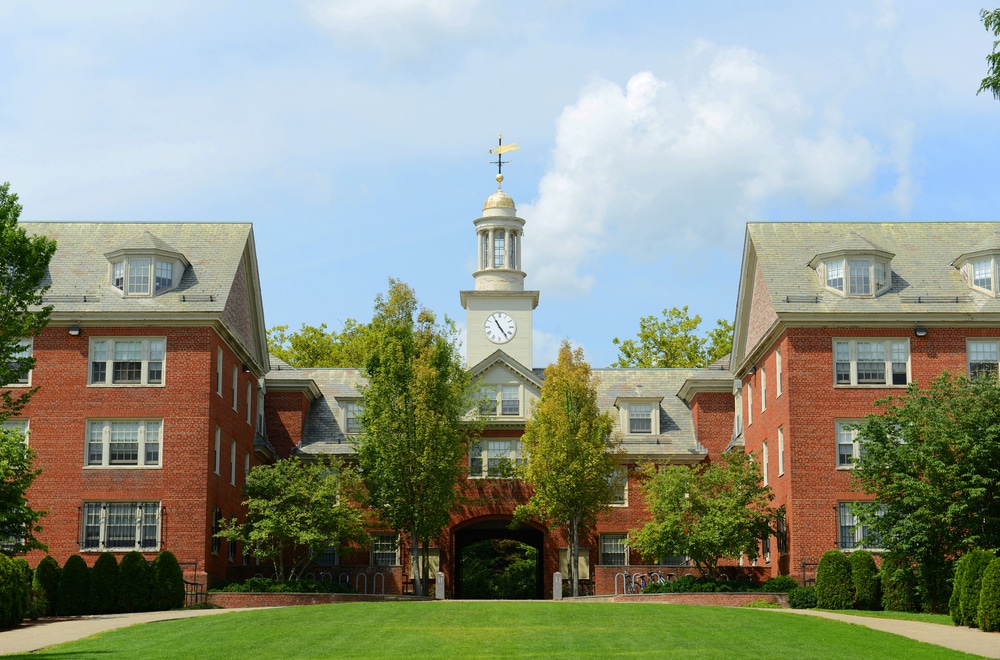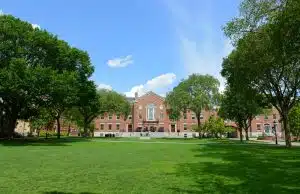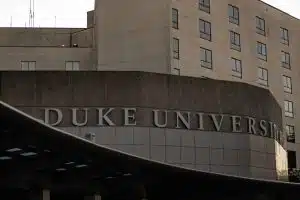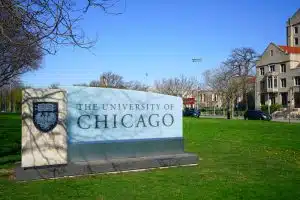Brown University is one of the most prestigious Ivy League schools in the United States. Every year, thousands of high school students dream of being accepted into this renowned institution. However, due to the limited number of spots available, many qualified applicants find themselves on the waitlist. In this article, we will explore the Brown University waitlist for 2025 and provide you with valuable information on what you need to know.
Understanding the Waitlist Process
Being placed on the waitlist can be both exciting and frustrating for prospective students. It’s important to understand the purpose of a college waitlist and how it works at Brown University.
The Purpose of a College Waitlist
The waitlist serves as a secondary pool of applicants who may be considered for admission if spots become available after the initial round of offers. Admissions committees carefully review waitlisted applicants to assess their fit with the university and its values.
When a college receives a large number of highly qualified applicants, it becomes challenging to accommodate everyone. The waitlist provides an opportunity for the admissions office to consider additional candidates who have shown potential but were not initially offered admission. It allows the college to maintain a diverse and talented student body while still giving deserving students a chance.
Being placed on the waitlist is not an outright rejection. It means that the admissions committee sees potential in your application but needs more time to evaluate it against the overall applicant pool. It’s important to remember that being waitlisted does not guarantee admission, but it does mean that you are still in the running.
How the Waitlist Works at Brown University
Each year, Brown University receives a large number of highly qualified applicants, far surpassing the available spots. As a result, the admissions office may place some applicants on the waitlist. While being waitlisted is not an outright rejection, it also does not guarantee admission.
At Brown University, the waitlist is not ranked. Instead, the admissions committee reviews waitlisted applicants holistically, considering their demonstrated interest in the university, academic achievements, extracurricular involvement, and other relevant factors.
When considering waitlisted applicants, the admissions committee takes into account the university’s enrollment goals, the number of students who have accepted offers of admission, and the overall strength of the waitlisted pool. They carefully assess each applicant’s potential contribution to the Brown community and their fit with the university’s values and mission.
It’s important to note that being on the waitlist does not mean you should sit back and wait passively. Brown University encourages waitlisted students to continue demonstrating their interest in the school. This can be done by submitting additional materials, such as updated grades or achievements, writing a letter of continued interest, or arranging a visit to campus.
While waiting for a final decision, it’s also essential to explore other college options and submit any necessary deposits to secure a spot elsewhere. The waitlist process can be unpredictable, and it’s important to have backup plans in place.
Ultimately, the waitlist process at Brown University is designed to give deserving applicants a fair chance at admission. It allows the admissions committee to carefully consider each applicant’s potential and make informed decisions based on the university’s needs and goals.
Factors Influencing the Waitlist
Several factors contribute to the admissions committee’s decision to place applicants on the waitlist. Understanding these factors can help you better comprehend the waitlist process and enhance your chances of moving off the waitlist.
When it comes to determining the size and composition of the waitlist, admission statistics, and trends play a significant role. The admissions office carefully considers various factors, such as the number of accepted students, enrollment projections, and other relevant data. By analyzing this information, they can effectively manage the waitlist and make informed decisions.
Admission statistics provide valuable insights into the overall competitiveness of the applicant pool. These statistics include the number of applications received, the number of offers extended, and the acceptance rate. By examining these figures, the admissions committee can gauge the level of interest in the institution and make adjustments to the waitlist accordingly.
Trends in admissions also influence the waitlist process. The admissions office closely monitors patterns and changes in applicant behavior, such as shifts in the popularity of certain majors or programs. This information helps them anticipate the potential demand for specific areas of study and make strategic decisions about the composition of the waitlist.
Impact of Early Decision and Regular Decision Acceptances
Early decision and regular decision acceptances can have a direct impact on the size of the waitlist. When students accept their offers of admission, it affects the number of available spots on the waitlist. If more students than anticipated accept their offers, fewer spots will be available for waitlisted applicants.
Early decision is a binding agreement between the student and the institution. Students who apply early decision commit to attending the college if accepted. As a result, the admissions office has a clearer understanding of how many spots will be filled before the regular decision process begins. This knowledge allows them to manage the waitlist more effectively and make informed decisions about extending offers of admission.
Regular decision, on the other hand, is non-binding. Students who apply through regular decision have until the national reply date to make their final decision. This means that the admissions office may not have a complete picture of the incoming class until after this date. As a result, the waitlist may be more fluid during this period as the admissions office waits for students to make their final decisions.
It’s important to note that the impact of early decision and regular decision acceptances on the waitlist can vary from year to year. Factors such as changes in applicant behavior, fluctuations in the number of applications received, and shifts in enrollment projections can all influence the overall dynamics of the waitlist.
Strategies to Get Off the Waitlist
If you find yourself on the Brown University waitlist, there are strategies you can employ to enhance your chances of being admitted. It’s essential to continue demonstrating your enthusiasm and commitment to the university.
Being on the waitlist can be a nerve-wracking experience, but don’t lose hope just yet. Brown University has a holistic admissions process, and they carefully consider each applicant. To increase your chances of being admitted, it’s crucial to take proactive steps.
Communicating Continued Interest
One of the most effective strategies is to communicate your continued interest in attending Brown University. Writing a detailed letter or email expressing why you are a good fit for the institution can make a significant impact on the admissions committee.
When crafting your letter, be sure to highlight any updates or achievements since submitting your application. Did you win an award? Did you participate in a meaningful community service project? These are the kind of updates that can demonstrate your growth and commitment to personal and academic development.
Additionally, consider attending online events hosted by Brown University. These events provide an opportunity to learn more about the university, connect with current students, and engage with faculty members. By actively participating in these events, you can demonstrate your genuine interest in becoming a part of the Brown community.
Furthermore, reaching out to faculty members or admissions officers can also be a valuable strategy. If you have specific questions about the academic programs or opportunities at Brown, don’t hesitate to send an email or schedule a virtual meeting. This kind of proactive engagement can showcase your dedication and eagerness to contribute to the university.
Updating Your Application
Another strategy to consider is updating your application with new information. This could include recent accomplishments, updated test scores, or additional recommendation letters.
If you have achieved something significant since submitting your application, such as winning a prestigious scholarship or publishing a research paper, it’s crucial to inform the admissions committee. These achievements can demonstrate your intellectual curiosity, passion, and potential to contribute to the Brown community.
Additionally, if you have taken any standardized tests since applying, such as the SAT or ACT, and have improved your scores, it’s essential to update your application with the latest results. Higher test scores can strengthen your application and provide further evidence of your academic abilities.
Furthermore, consider obtaining additional recommendation letters from teachers, mentors, or supervisors who can speak to your strengths and potential. These letters should provide unique insights into your character, abilities, and potential contributions to the university.
When submitting application updates, be sure to follow Brown University’s guidelines and deadlines. It’s essential to respect the admissions committee’s process and provide them with the necessary information in a timely manner.
Remember, being on the waitlist does not mean you are out of the running. By employing these strategies and demonstrating your continued interest and commitment to Brown University, you can increase your chances of being admitted. Stay positive, stay proactive, and continue to showcase why you are an excellent fit for the Brown community.
Preparing for Possible Outcomes
While waiting to hear back from the waitlist, it’s crucial to prepare for all possible outcomes. Consider these options to ensure you have a plan in place.
As you eagerly await a response from the waitlist, it’s important to remember that the college admissions process can be unpredictable. While you may have your heart set on attending Brown University, it’s essential to have a backup plan in case you are not accepted. By considering other college options, you can ensure that you have alternative schools that align with your academic and personal goals.
Considering Other College Options
Given the uncertainty of being admitted from the waitlist, it is prudent to consider other college options. Research and explore alternative schools that align with your academic and personal goals to have backup choices in case you are not accepted.
Take the time to delve into the various colleges and universities that offer programs and opportunities that resonate with your interests. Look beyond the prestigious names and consider the unique strengths and resources each institution has to offer. By broadening your horizons, you may discover hidden gems that could provide an equally enriching college experience.
Furthermore, exploring other college options can help you gain a better understanding of the different academic environments and campus cultures that exist. You might find that a smaller liberal arts college or a specialized program at a different university aligns more closely with your aspirations. By considering these alternatives, you can ensure that you make an informed decision about your future education.
Planning for a Gap Year
If you are confident that Brown University is your top choice and you are not admitted from the waitlist, you may consider planning for a gap year. Use this time to develop your skills further, gain relevant experiences, or engage in meaningful projects that align with your academic and personal interests.
A gap year can be a transformative experience that allows you to explore your passions and broaden your horizons before diving into college life. Consider pursuing internships, volunteering opportunities, or even traveling to immerse yourself in different cultures. By taking this time to grow and learn outside of the traditional classroom setting, you can bring a unique perspective and a wealth of experiences to your future college journey.
During your gap year, you can also focus on personal growth and self-reflection. Use this time to set goals, develop new hobbies, or engage in activities that challenge you intellectually and emotionally. Whether it’s learning a new language, starting a community service project, or pursuing a creative endeavor, the possibilities are endless.
Remember, a gap year is not a setback but an opportunity to invest in yourself and your future. Embrace the chance to explore different paths, gain valuable experiences, and develop a deeper understanding of your own aspirations.
Frequently Asked Questions About the Brown University Waitlist
Here are some common questions and answers regarding the Brown University waitlist:
Waitlist Acceptance Rates
While acceptance rates vary from year to year, it is important to note that waitlist acceptance rates are typically lower than regular admission rates. However, the rates also depend on several factors, including the number of students who accept their offers of admission.
Timeline for Waitlist Decisions
Brown University typically releases waitlist decisions in late April or early May. It is essential to regularly check your email and applicant portal for any updates or notifications from the university.
Financial Aid and the Waitlist
If you receive financial aid at Brown University, it is crucial to understand how the waitlist may affect your financial aid package. Contact the financial aid office for detailed information and guidance regarding your specific situation.
Final Thoughts
The Brown University waitlist for 2025 is an important part of the admissions process. While being waitlisted can be challenging, it is essential to stay informed and proactive. By understanding the waitlist process, utilizing strategies to showcase your continued interest, and preparing for possible outcomes, you can navigate the waitlist with confidence and increase your chances of admission to this prestigious institution.
How AdmissionSight Can Help You with College Admissions
AdmissionSight is a college consulting firm that provides personalized assistance to students throughout the college admissions process. Here are some ways that AdmissionSight can help you:
Admissions strategy: AdmissionSight can help you develop a strategic plan for your college application process. Our professional consultants can assist with identifying schools that are a good fit for your academic, extracurricular, and personal goals and help you plan and prioritize your application strategy.
Application review: AdmissionSight can review your application and provide feedback on how to improve it. We can offer suggestions on making your application stand out and highlighting your strengths and unique qualities.
Essay coaching: AdmissionSight can help you craft compelling essays that showcase your personality, goals, and achievements. We can guide you through the essay writing process and provide feedback on your drafts to help you refine your writing.
Interview preparation: AdmissionSight can provide interview coaching to help you feel confident and prepared for college interviews. Our experts can offer tips on how to present yourself professionally and how to answer common interview questions.
Extracurricular planning: AdmissionSight can help you plan and develop your extracurricular activities to make them more impactful and meaningful. We can suggest activities that align with your interests and goals and provide guidance on demonstrating your leadership and initiative.
Overall, AdmissionSight can provide valuable guidance and support throughout the college admissions process to help you maximize your chances of getting accepted into the college of your choice.
With a high success rate of over 75%, we have built a strong network in the past decade. Book an initial consultation today, free of charge!








































